Capilae is one of the few centres in which we use both surgical techniques: FUE and FUSS and we can thus offer an objective view of the most appropriate technique for each patient situation. Dr Juan Ruiz Alconero trained in the USA and Canada in both techniques.
It is important to remember that these two techniques concern extraction of the follicular units and the implantation, and therefore the design, always depends on the surgeon and on the use of the extracted units, and on the proposed design, and not on the technique used in the extraction.
FUSS or strip capillary surgery is a technique in which we extract hair from the back of the head, then suture and dissect the transplants one by one before implanting them in the receiving area.
The FUSS hair transplant is carried out by extracting a strop about 25cm long and 1cm wide from the upper nape (above a small bony protuberance called the occipital eminence).
This extraction is carried out under local anaesthetic, which involves a few pinpricks in the rear area, which are bearable, but irritating, and which leave the entire area numb for about 6 hours.
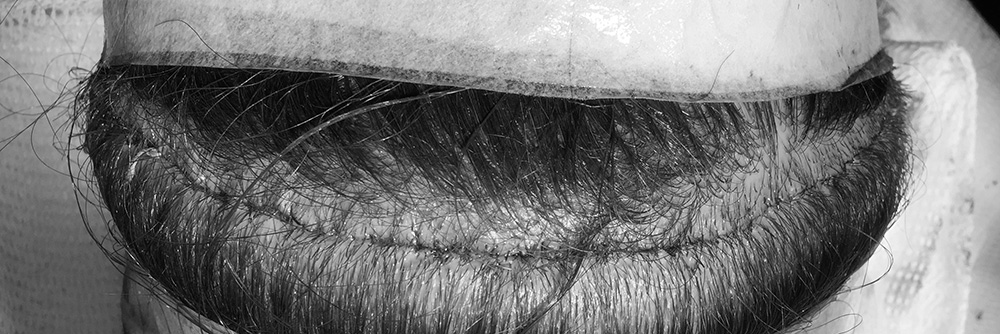
In the FUSS capillary implant, the incision is closed using a specific suture, called a trichophytic suture, which allows the hair to grow through the scar, greatly concealing said scar in the future.
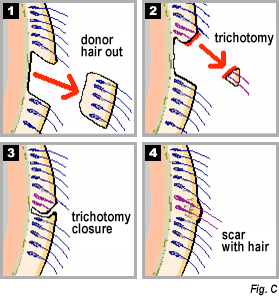
A good suture done by expert hands makes the scar barely 1 mm wide, being completely concealed by hair cut to no. 3, being difficult for even your usual hairdresser to see.
Once extracted, said strip is dissected to divide all the follicular units into units of one, two or three hairs. It is very important that this part of the capillary surgery is done quickly and correctly, making the optimum use of the time the follicle spends outside the body so that is suffers no more than is necessary.
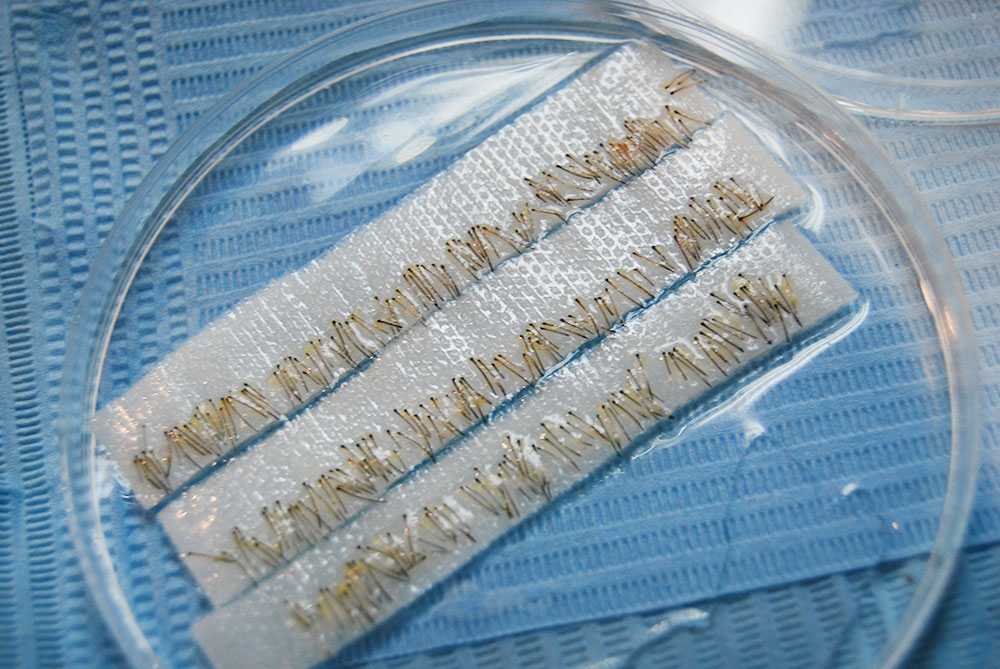
Finally, micro-incisions are made with ad hoc surgical blades, of about 0.9 mm in length, and they are implanted into said incision one by one. The follicular units of 1 hair on the first line and the 2 or 3 hairs behind to lend density.
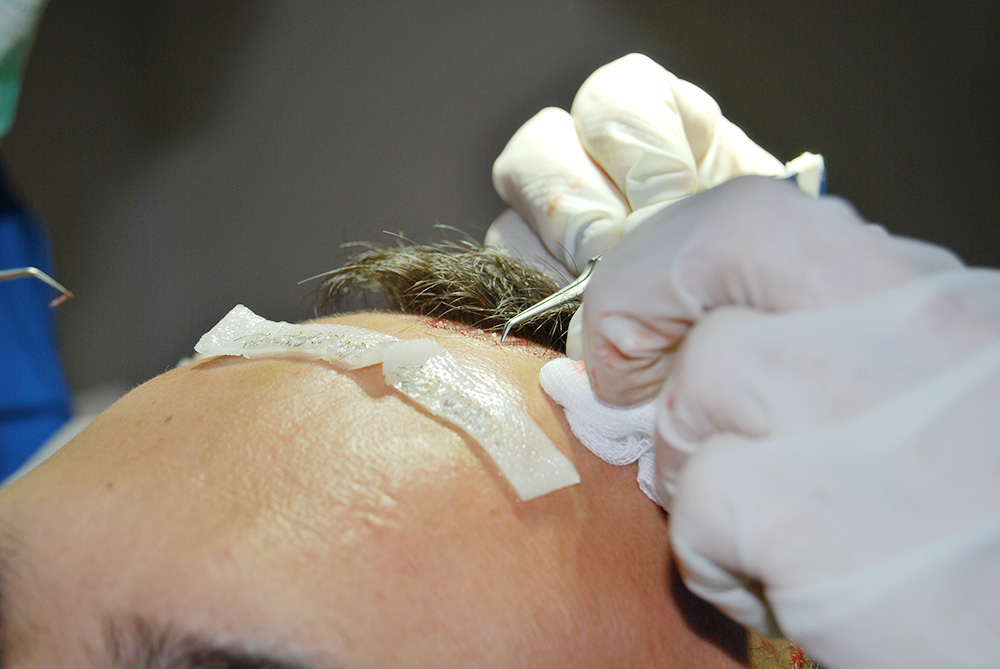
The area is cleaned once all the units have been implanted, and the patient goes home with no bandaging on his/her head.
The patient must not drink alcohol or take any medicines containing NSAIDs for about 48 hours prior to the surgery, as well as try to reduce the tobacco habit as much as possible.
The day of the hair implantation surgery you must come with your hair showered and freshly washed and, a very important point, with a shirt that opens at the front. Not a t-shirt or a jersey to prevent the clothes from touching the transplants when being put on.
It is also advisable that somebody come to pick you up after the surgery, since you may be too tired to drive a car. If this is not possible, the clinic itself will call a taxi for the patient.
When the FUSS capillary surgery is finished, the patient will be given both the medication he must take (for 3 days at the most) such as the special shampoo to use in the days following. Also some very detailed day-by-day instructions which have to be followed very strictly.
The worst day of the post-operation phase is the day of the surgery, though it's not at all unbearable. It's only irritating, and with painkilling medication it is easily overcome. The next day it is very mild and there is almost no need to take medication.
In general washes are not begun until 48 hours have elapsed, very gently.
You can begin to do gentle sport after 12 days, such as racing or riding a bike. Contact sports and weights are not recommended until a month after the intervention.
The suture is removed after 12 days by Dr Ruiz Alconero.
The hair begins to emerge after the fifth month, results start to be seen after 6-7 months and until a year or even a year-and-a-half has passed we shall not see the final and definitive result. Be patient.
FUE capillary surgery consists of extracting follicular units one by one, rather than in bulk, as happens in FUSS capillary transplant. It prevents the tiniest posterior linear scar but nevertheless it makes the surgery longer and more expensive.
The anaesthesia used in FUE capillary micro-transplant is the same as in the other technique. It is local, meaning it is only injected into the area to be worked.
After that, the incisions to extract the follicles are begun using a small cylindrical "punch" that varies between 0.9 and 0.7 mm in diameter. These incisions may be made with a manual system or a hydraulic system which makes the extraction quicker.
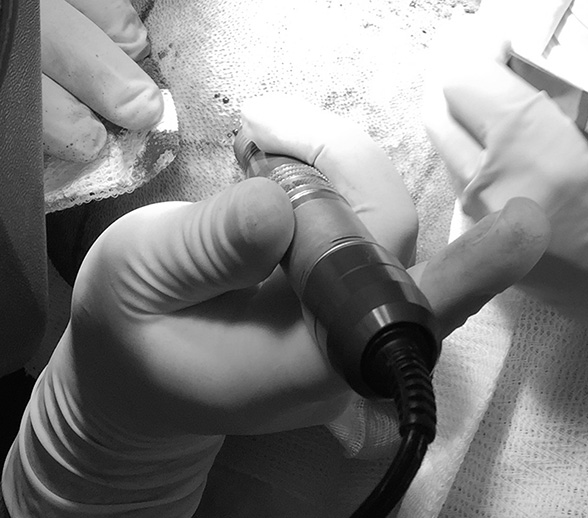
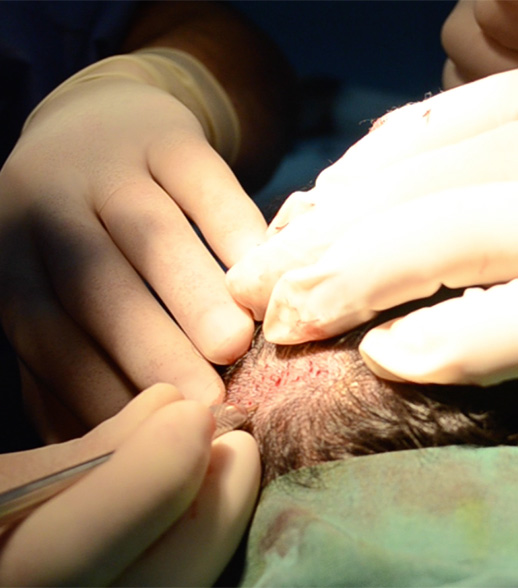
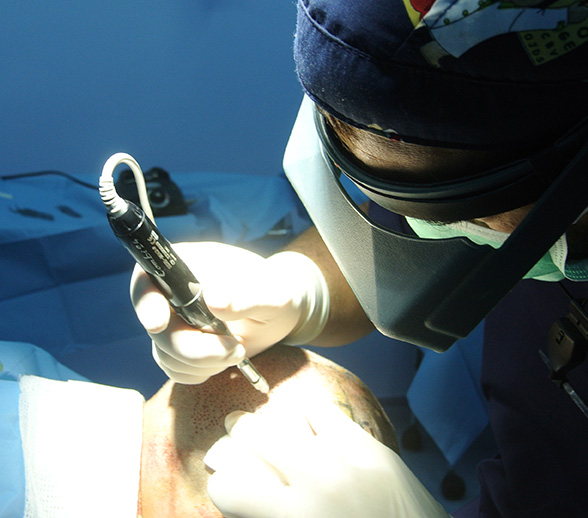
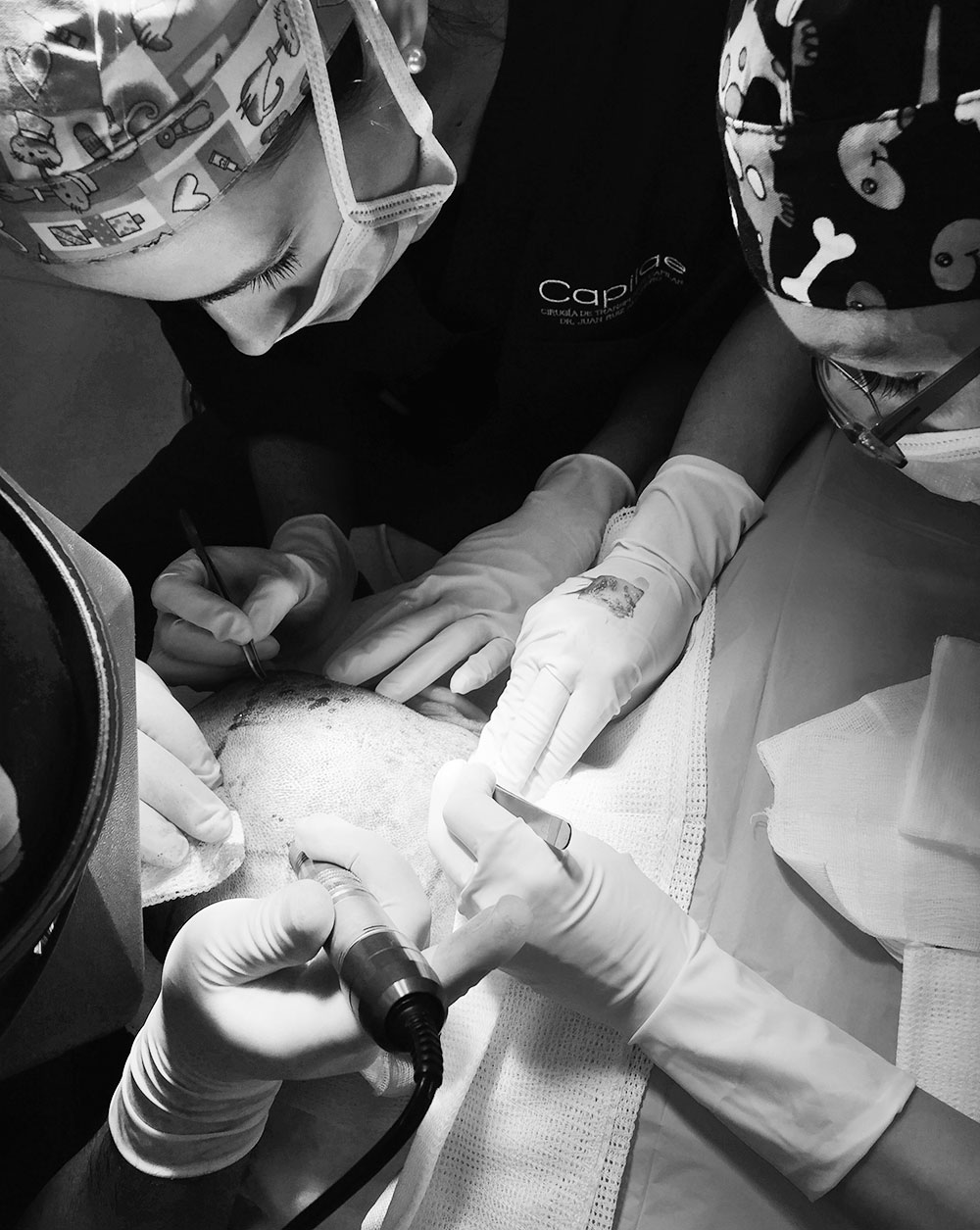
The follicular units are extracted one by one with special tweezers to not damage the structure and reduce its survival.
Some clinics consider that with FUE fewer staff are necessary than with the FUSS technique, but at Capilae, Dr Juan Ruiz Alconero thinks the opposite, since the number of people attending the surgery ensures a short period of time passes between the extraction and the implantation, lowering the time the units spend outside the body, and the time the patient is in the theatre.
With the “FUE Work Flow”® technique Dr Juan Ruiz Alconero has managed to reduce the interventions which only a few years ago were carried out in 2 days for a total of 2000 transplants, 2400 units may be implanted in 7 hours.
Once all the transplants have been extracted, the area is covered using a preparation of Plasma Rich in Growth Factors to reduce scarring time and reduce to risk of infections. The units are counted and prepared for the implantation.
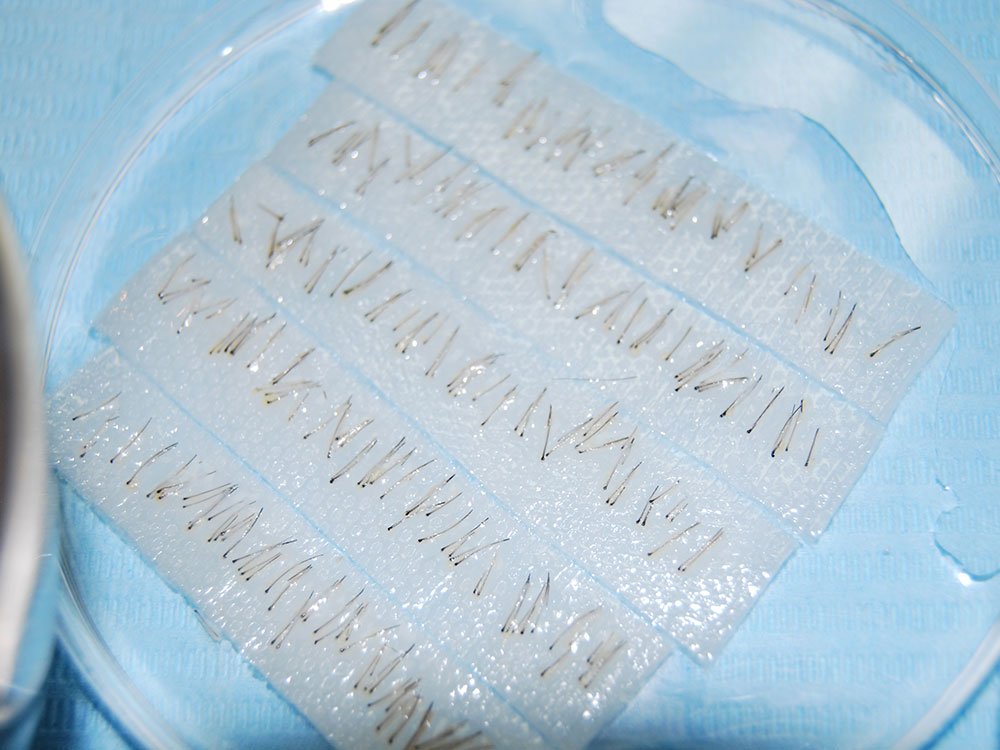
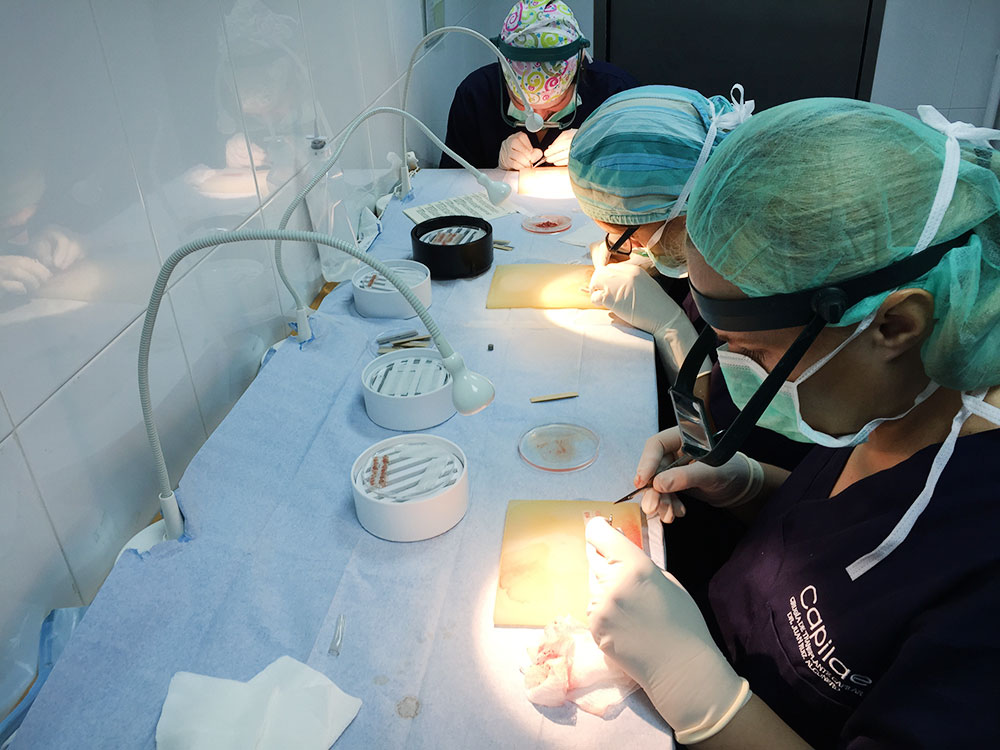
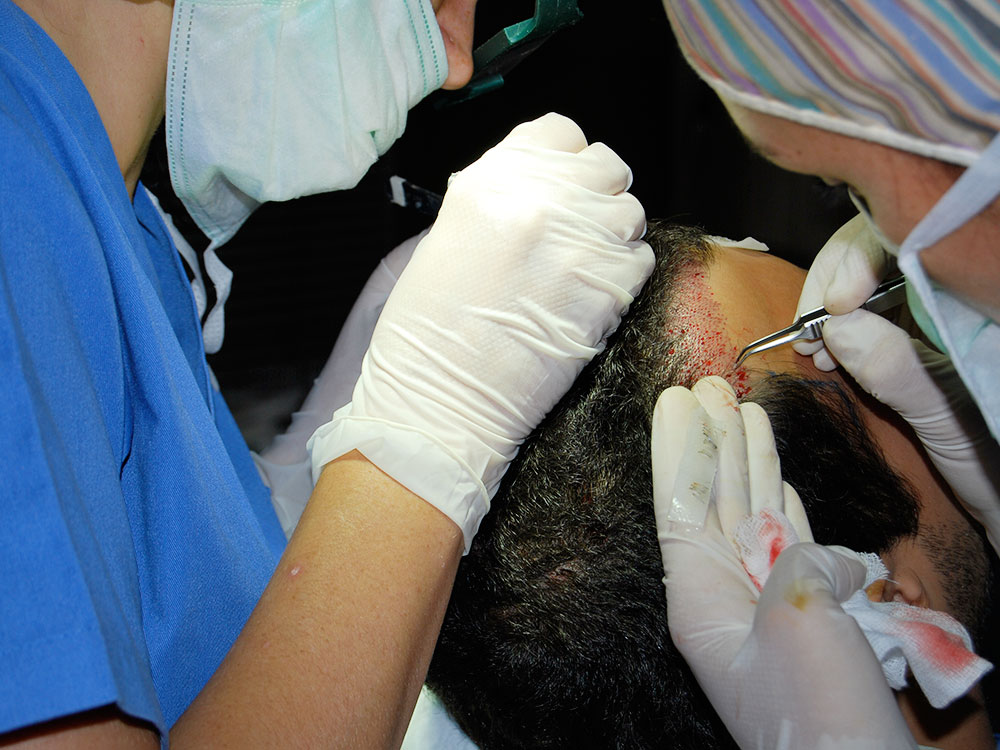
The implantation is carried out with very small incisions of 0.8 or 0.9 mm in the donating area. The transplants are placed in the incisions one at a time, following the design agreed in advance between Dr Juan Ruiz Alconero and the patient.
Given the characteristic technique of FUE capillary transplant, your hair must be shaved to number 1, since it must be possible to put said hair in the microscopic punch, and with long hair it is difficult and not very effective. Ideally, the patient would have his hair cut the day before, and when he is in the clinic Dr Ruiz Alconero will assess whether it is necessary to shave any further depending on the type of hair, thickness and density.
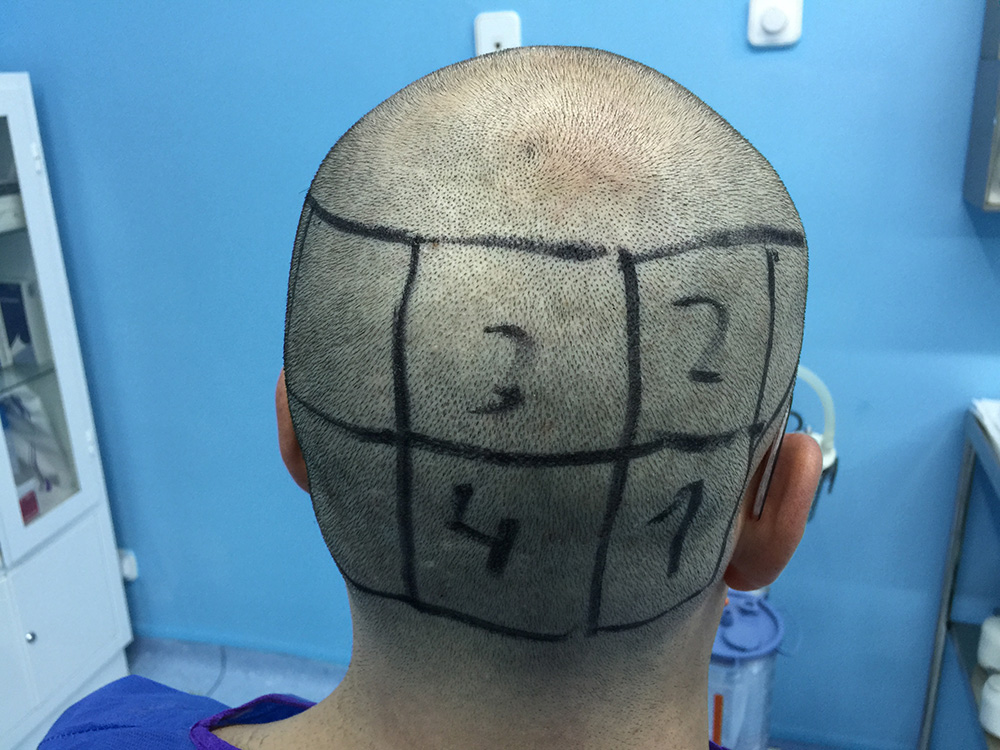
The patient must refrain from drinking alcohol or taking medication that may interfere with platelet aggregation, such as ibuprofen, aspirin and their derivatives. He must also smoke tobacco as little as possible.
He must attend surgery having had breakfast, and remember that he must come with a shirt with buttons, and not a t-shirt or jersey.
On finishing the capillary transplant surgery with the FUE technique, Dr Ruiz Alconero will give the patient the medication and the special washing kit and he will explain the instructions to follow on the following days, as well as giving him it all in writing to make it all simpler.
The post-operation stage is rather easier than with the FUSS technique, since there is no suture.
The irritation are also slight on the first day.
Benefits of FUSS capillary surgery
As a rule more follicular units are obtained (on average between 2300 and 2700 FUs, but it is possible to obtain as many as 4000). Since it is faster (between 4-and-a-half and 5 hours on average) it is somewhat cheaper.Benefits of FUE capillary surgery
It does not leave a line scar at the back and therefore you can wear your hair shaved. The resumption of sport is somewhat quicker than with the FUSS technique.